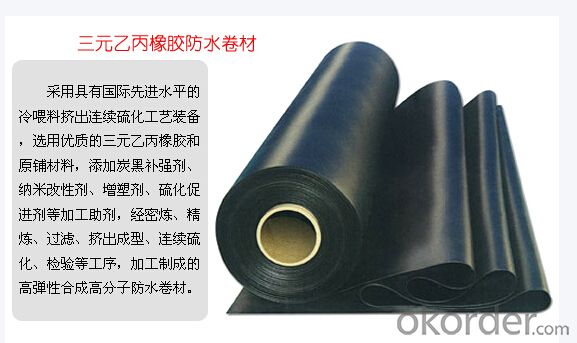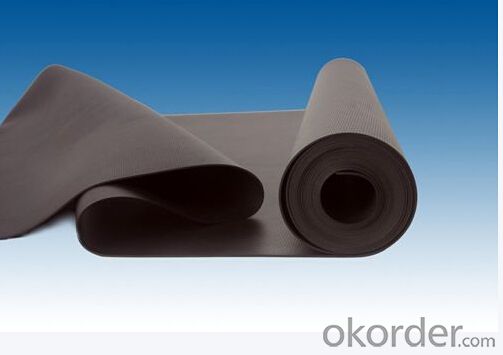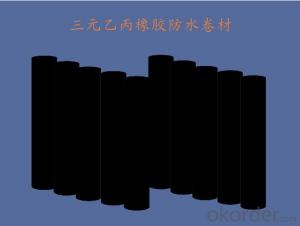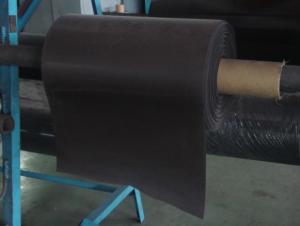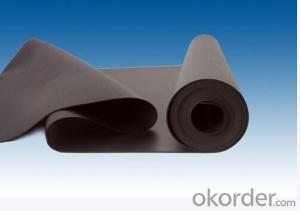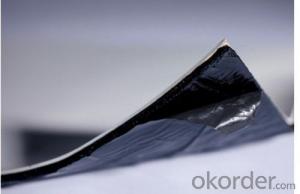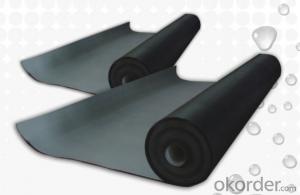EPDM Waterproofing Roof Membrane
- Loading Port:
- China Main Port
- Payment Terms:
- TT OR LC
- Min Order Qty:
- -
- Supply Capability:
- -
OKorder Service Pledge
OKorder Financial Service
You Might Also Like
EPDM waterproofing roofing membrane
1. Introduction:
2. Features:
Excellentphysical and mechanical performance
Hightearing resistance
Gooddeformation adaptability
High puncture resistance
Highaging resistance
UVresistance
3. Application:
Roofs, Basement, Toilets
Industrial and civil building waterproofing
Geosynthetic liner for swimming pool, channels, irrigation system
Especially suitable for projects with high requirements in durability, anti-corrosion and deformation
4. Specification:
Type | EPDM Waterproof Membrane | |||
Material | EPDM Rubber | |||
Thickness | 1.0mm | 1.2mm | 1.5mm | 2.0mm |
Size | 1.2m(width) * 20m(length)/roll | |||
Type | Vulcanized | |||
Pattern | Non-reinforced(homogeneous) | |||
Packing | 24sqm--80sqm/roll, with plastic bag | |||
Color | Black | |||
Application | Roofs, basement, pond, Lake, steel structure roof, swimming pool, underground, tunnel, etc | |||
5. Some photos:
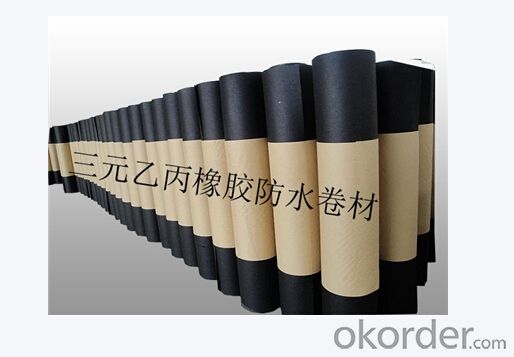
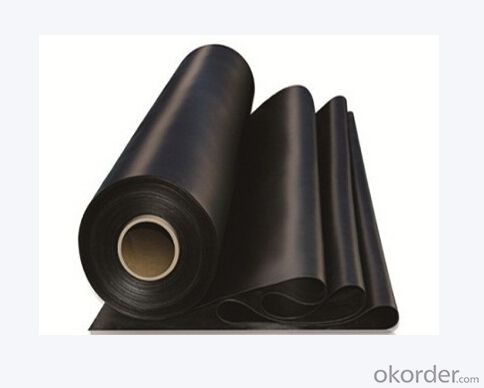
- Q: It is good for black roof with waterproof paper
- Roof waterproof selection is generally: SBS modified asphalt waterproofing membrane and self-adhesive waterproofing membrane.
- Q: Can a waterproofing membrane be used in elevator pits or sump pits?
- Yes, a waterproofing membrane can be used in elevator pits or sump pits to prevent water infiltration and protect the structure from potential damage caused by moisture.
- Q: Is a waterproofing membrane resistant to impact or abrasion damage?
- A waterproofing membrane is typically designed to be resistant to impact or abrasion damage to a certain extent. However, the level of resistance can vary depending on the specific type and quality of the membrane. In general, waterproofing membranes are engineered to withstand normal wear and tear, including minor impacts and abrasions. They are typically made from durable materials such as modified bitumen, PVC, EPDM, or polyurethane, which provide a certain level of impact and abrasion resistance. These materials are chosen for their ability to withstand external forces and protect the underlying structure from water penetration. While most waterproofing membranes can handle moderate impacts and abrasions, they may not be completely impervious to severe damage. Heavy impacts or sharp objects can potentially puncture or tear the membrane, compromising its waterproofing capabilities. Therefore, it is important to handle and maintain the membrane with care to minimize the risk of damage. To further enhance the impact and abrasion resistance of a waterproofing membrane, additional protective layers can be added. For example, a layer of geotextile fabric or a cementitious coating can be applied over the membrane to provide added strength and durability. In summary, while a waterproofing membrane is designed to be resistant to impact and abrasion damage, the level of resistance can vary depending on the specific type and quality of the membrane. It is important to choose a high-quality membrane and take appropriate measures to minimize the risk of damage for long-lasting waterproofing performance.
- Q: Can a waterproofing membrane be used in swimming pools?
- Yes, a waterproofing membrane can be used in swimming pools. These membranes are specifically designed to prevent water leakage and provide a durable and long-lasting waterproof seal. Using a waterproofing membrane in swimming pools helps to protect the structure from water damage and maintain the integrity of the pool's structure.
- Q: Is a waterproofing membrane resistant to abrasion?
- Yes, a waterproofing membrane is generally designed to be resistant to abrasion. The membrane is typically made of durable materials that can withstand friction and wear, ensuring long-lasting protection against water damage.
- Q: Can a waterproofing membrane be used on tunnels with communication systems?
- Yes, a waterproofing membrane can be used on tunnels with communication systems. The membrane can help protect the communication systems from water damage and ensure their proper functioning.
- Q: Can waterproofing membranes be used on concrete floors?
- Yes, waterproofing membranes can be used on concrete floors. Waterproofing membranes are commonly used in construction to prevent water penetration and protect the underlying structure. When applied to concrete floors, these membranes create a barrier that prevents water from seeping through and causing damage. Waterproofing membranes can be particularly useful in areas such as basements, bathrooms, and outdoor patios where water exposure is common. They help to maintain the integrity of the concrete floor and protect it from moisture-related issues like cracking, spalling, and mold growth.
- Q: Can a waterproofing membrane be used for a plaza deck?
- Indeed, a plaza deck can utilize a waterproofing membrane. A plaza deck, typically raised and subject to diverse weather conditions like rain, snow, and sunlight, necessitates the use of waterproofing membranes. These membranes are specifically designed to act as a shield against water intrusion and safeguard the underlying structure against moisture-related harm. They are commonly employed in outdoor settings, including plaza decks, with the aim of averting water seepage into the building or structure below. The installation of a waterproofing membrane on a plaza deck not only guarantees the deck's endurance and resilience but also offers pedestrians a secure and dry environment.
- Q: Can a waterproofing membrane be used for a plaza deck waterproofing?
- Yes, a waterproofing membrane can be used for plaza deck waterproofing. Plaza decks are typically exposed to the elements, including rain and snow, and require a waterproofing system to prevent water infiltration and potential damage to the structure below. Waterproofing membranes are designed specifically for this purpose, offering a barrier against water and protecting the deck from moisture-related issues such as leaks, deterioration, and mold growth. These membranes are typically made from materials such as bitumen, PVC, or EPDM, and are applied in multiple layers to ensure a durable and watertight seal. By using a waterproofing membrane, plaza decks can effectively maintain their structural integrity and longevity.
- Q: Can a waterproofing membrane be used on bridge decks?
- Yes, a waterproofing membrane can be used on bridge decks to protect the structure from water infiltration and extend its lifespan.
Send your message to us
EPDM Waterproofing Roof Membrane
- Loading Port:
- China Main Port
- Payment Terms:
- TT OR LC
- Min Order Qty:
- -
- Supply Capability:
- -
OKorder Service Pledge
OKorder Financial Service
Similar products
Hot products
Hot Searches
Related keywords



